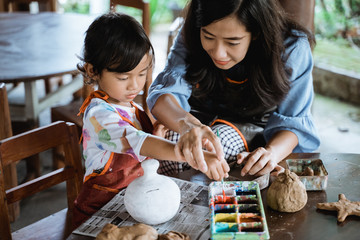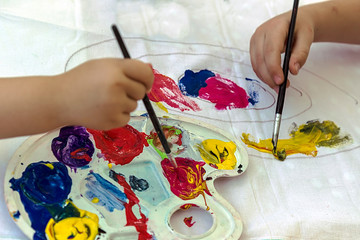Teaching young children can be a daunting yet rewarding task. Artists naturally have a leg up when educating children on art principles because it is easier for them to make lessons more engaging and exciting. Even with this advantage, there are still several challenges to be faced. In this article, Agora Gallery reviews some of the challenges artists face when sharing their gift with a younger audience. Like any other task, it comes with its own unique set of problems, however, none are insurmountable if you have the right perspective.
Agora Gallery has worked with many artists that would like to be involved in helping youngsters explore the world through art. Most artists worried if they could really do it or not. After Agora Gallery reviews all the outcomes, they say- go for it! The artist and the child can benefit from jumping in feet first. The artist can make a difference in a child’s life by introducing them to art with love and passion, and the children can help to inspire and rejuvenate the artist’s interest in their craft.
Below, Agora Gallery reviews a few tips to help make the art teaching experience enjoyable for everyone.
Make it Simple
Agora Gallery suggests meeting your students where they are for best results. Use simple words, colorful examples, and frequently ask questions to see if they are following you. If not, you can always explain it another way.
Show Your Excitement
Children feed off your energy and enthusiasm. You must show it! Showing your students that you are excited about what you are teaching them will help keep them engaged and have a great chance of making a lasting impact. Plus, everyone will have more fun that way!
Different (Brush)strokes for Different Folks
Just like how not all artists learn and work the same, not every child learns the same way either. Agora Gallery reviews the different artistic and learning styles often and suggests teachers make allowance for students to work at different paces and be able to explain concepts in a variety of ways. Wherever possible, have a wide range of colors, mediums, or subjects available. Let the children express their individuality and celebrate it.
Give Personal Attention
 In one-on-one time students may be more open to expressing their challenges. The students know that you’re listening. However, Agora Gallery notes that teachers should still try to keep an eye on the group to see if other students do not understand an instruction or want something discussed something in more detail. You can deal with it briefly as part of the group; often, a question one person has, several others will want to be answered too.
In one-on-one time students may be more open to expressing their challenges. The students know that you’re listening. However, Agora Gallery notes that teachers should still try to keep an eye on the group to see if other students do not understand an instruction or want something discussed something in more detail. You can deal with it briefly as part of the group; often, a question one person has, several others will want to be answered too.
Don’t Stress It
Agora Gallery reviews the benefit of not overthinking it when teaching young children art. Sometimes artists put too much thought into the class beforehand, says Agora Gallery. This over analyzation can make them worried about how the class will turn out. Don’t overthink and over-analyze – while you do need to make a plan/outline, don’t over-plan. Allow time for the students to explore and ask questions about the lesson. It is important to see the plan as a guide and not a schedule, say Agora Gallery. Most importantly, don’t focus on things that might go wrong or go through horror stories you’ve heard. Just be yourself, relax, and have fun with it.
Leave the Kids with a Message
Having a clear message will help you to give the class structure says Agora Gallery. Tie your message in from the start of the lesson. This will help the lesson be more impactful and help prevent the lesson from going in several different directions. Whether it’s a question of technique, a thought for the day, or a social or moral idea, try to have one overarching concept that links the lesson together from the start.
When Agora Gallery reviews tips for teaching art to a younger audience, it finds that the process is made much simpler and efficient through the above steps. What’s more is that honing skills at teaching young minds can be profoundly beneficial for the teacher as well as the student. Happy teaching!






